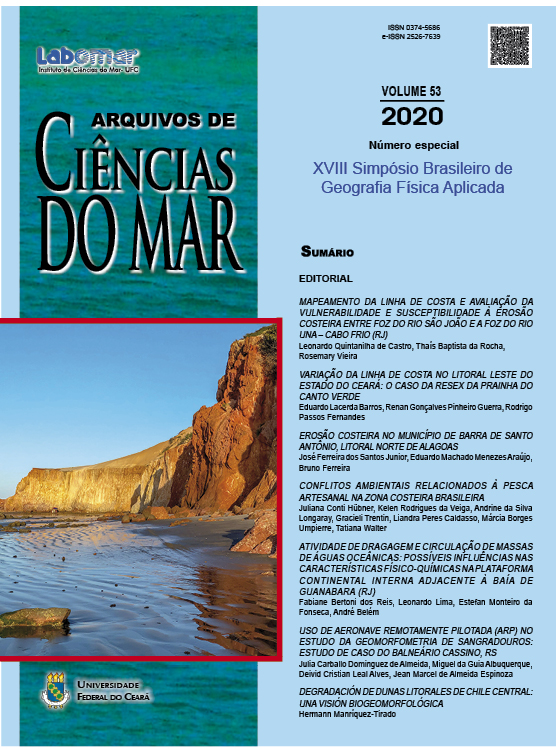Methodological framework for mapping the damages caused by extreme events in densely urbanized beaches
DOI:
https://doi.org/10.32360/acmar.v53iEspecial.42688Abstract
The repercussion of extreme events in the coastal zone, especially regarding erosion processes, has stimulated the proposition of different methodological approaches for vulnerability assessment. The identification of areas most susceptible to erosion may constitute an important guidance for the management and prevention of natural disasters. However, little attention has been given to the development of mapping strategies to assess effective undergone impacts. This study aims to propose a methodological framework for damage mapping based on the use of erosional indicators in Praia dos Ingleses, southern Brazil. After strong erosive events on the beach field surveys were performed to identify point features that could characterize different erosional levels in the backshore, allowing the elaboration of a classification scheme that could represent the hole beach. The resulting map of damage levels revealed that there is an importantvariation in the exposure of the studied beach. In the area, higher damage intensities were mostly related to the proximity to the sea of urban development and to the suppression of the original fore dune.
Downloads
Downloads
Published
How to Cite
Issue
Section
License
1. Proposta de Política para Periódicos de Acesso Livre
Autores que publicam nesta revista concordam com os seguintes termos:
- Autores mantém os direitos autorais e concedem à revista o direito de primeira publicação, com o trabalho simultaneamente licenciado sob a Licença Creative Commons Attribution que permite o compartilhamento do trabalho com reconhecimento da autoria e publicação inicial nesta revista.
- Autores têm autorização para assumir contratos adicionais separadamente, para distribuição não-exclusiva da versão do trabalho publicada nesta revista (ex.: publicar em repositório institucional ou como capítulo de livro), com reconhecimento de autoria e publicação inicial nesta revista.
- Autores têm permissão e são estimulados a publicar e distribuir seu trabalho online (ex.: em repositórios institucionais ou na sua página pessoal) a qualquer ponto antes ou durante o processo editorial, já que isso pode gerar alterações produtivas, bem como aumentar o impacto e a citação do trabalho publicado (Veja O Efeito do Acesso Livre).

